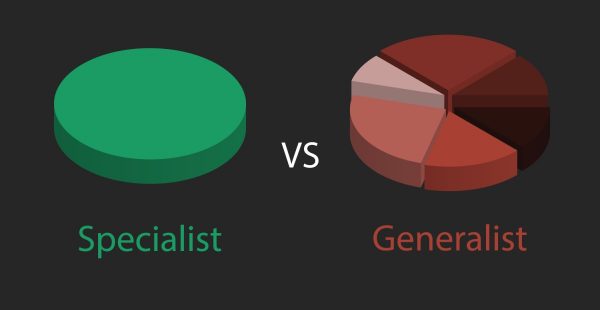The profit struggles of financial advice licensees laid bare

Individual financial advisers have never been busier but new analysis conducted by Financial Newswire’s financial analysis team has revealed the degree to which most of Australia’s medium-to-large-size financial planning licensees are struggling to achieve and sustain profitability.
The financial analysis, based on the latest round of company reporting to the Australian Securities Exchange (ASX) underscores why licensees such as Diverger are looking to grow their scale through seeking mergers with similarly-scaled firms such as Centrepoint Alliance.
It also explains why the licensees are competing fiercely to recruit both good advice practices and individual financial advisers.
What the analysis shows is that even the two biggest players in the financial planner arena – AMP Limited and Insignia (IOOF) are struggling to generate a profit out of advice and that the best that they can hope for in the near-term is break-even.
But it is not just listed players losing many, the Financial Newswire analysis team has pointed to many well- known unlisted licensees posting losses with the full picture likely to emerge over coming months.
As an example, Fortnum reported a FY21 loss of $999,041 following from a $794,374 loss in FY20. Privately owned licensees losing money is not uncommon, it will be some months before many private licensee results for FY22 will be known, but the Fortnum result is expected to be representative of the broader situation.
Because of the time and opaqueness with respect to the financial reporting of many private licensees, our financial analysis team has drawn on the performance of the publicly-listed licensees to provide an indicator.
.
| CentrePoint (CAF) | Clime (CIW) | CountPlus (CUP) | Diverger (DVR) | Sequoia (SEQ) | WT Financial (WTL) | |
| 12 mth share price | +5.39% | -25.75% | -20.88% | -12.71% | -18.88% | -24.62% |
| NTA per share | 3.7 cents | 16.3 cents | 27.5 cents | -9.6 cents | 9.9 cents | -4.4 cents |
| Net Cash/(Debt) | $14.742M | $8.141M | $11.739M | $2.527M | $14.892M | ($1.316M) |
| Operating Cash Flow | $7.296M | $1.289M | $8.300M | $5.658M | $10.552M | ($2.171M) |
| Reported NPBT | $2.570M | $0.214M | $8.296M | $5.435M | $8.633M | $2.351M |
| PE (NPBT) | 22x | 163x | 9x | 7x | 9x | 9x |
| Market Capitalisation | $56.129M | $34.778M | $78.343M | $39.493M | $78.301M | $21.544M |
Looking more closely at the segment reporting for licensee services:
| CentrePoint (CAF) | Clime (CIW) | CountPlus (CUP) | Diverger (DVR) | Sequoia (SEQ) | WT Financial (WTL) | |
| Adviser Numbers | 517 | 83 | 278 | 221 | 317 | 526 |
| AFSL Segment NPBT | $3.644M | $0.428M | $3.216M | $3.260M* | $5.475M | $3.335M |
| NPBT per Adviser | $7,050 | $5,160 | $11,570 | $14,750 | $17,270 | $6,340 |
| Average Revenue per Adviser | $214,000 | not disclosed | $295,000 | $290,000 | $203,000 | $189,000 |
*DVR limited AR revenue is excluded from NPBT calculation.
The analysis shows that if the revenue Diverger generates from its CARE product and platform payments ($4.854M) is excluded, then the licensee segment would be loss making and the NPBT per adviser is a moot point.
Equally, with respect to CentrePoint, if the $2.792 million in product revenue is removed then the licensee segment generates less than $1.0M in profit translating to $1,650 profit per adviser.
The CAF merger with Clearview indicated a pro-forma EBITDA of $8.0 million, reported FY22 EBITDA at $4.5 million which suggests there is still work to do.
The analysis shows that Clime is achieving a low profit per adviser. At a purchase price of around 10 times for its acquisition of dealer group, Madison and growth in Advisers of +7 in FY2022, the result suggests there is more to be done.
Where profit per adviser is concerned, some commercial models seem to be working better than others.
Thus, if AMP, at 1,043 advisers, could achieve profit per adviser in line with CountPlus then its advice business could generate NPBT of $12.067 million – a lot of work but compared to its reported loss at half year a significant lift for earnings per share.











These numbers are pretty concerning. Is it conceivable these AFSLs pivot to less risky, more profitable business models? This would have major consequences for advisers who could simply not operate their small businesses without the cover provided by the large AFSL. Or perhaps this is more the issue? Licensees merely act as the buffer to small unviable financial planning practices merging under a more corporate model.
Privately owned licensees (who run much leaner) may get away with it for longer, but surely, ASX-listed firms will be asked questions by concerned shareholders.
How much longer can you keep running businesses based on sponsorships (education partnerships) from Fund Managers?
It is a myth that smaller practices need the support of large AFSLs to survive. It is simpler and cheaper for small practices to get their own AFSL. The only reason large AFSLs exist is to funnel client money into their inhouse products. All this stuff about “economies of scale” and “greater protection” is total baloney. Most of the “compliance support” provided by large AFSLs is for compliance that isn’t actually needed when you’re not trying to justify inhouse product recommendations.
Agreed, my AFSL was approved in 4 weeks…and at a fraction of the costs we are told…
100% correct, scrap Vertical Integrated sales and compliance rubbish to try to justify the often unjustifiable conflicts goes.
It is a myth indeed that you need a large AFSL to survive, the user pay model works well. Having come from a large DG – they just want you to drink their kool aid. We run our own AFSL as a co-op, not profit driven and certainly not product pushing. You can do that when you are nible.
Seems like ASIC & Treasury are intent on destroying this industry from all angels. Takes a lot of auditors to audit the process, of those auditors that audit those auditors that check a Fee Disclosure Statement where you’ve been charging the client the same $4,000 for the last 9 years. Think of the overheads.
So the death rattle is upon us!
The hit job is almost done!
I wonder if they’ll create a play station game (Call of Duty style) where Government officials hunt down financial planners who come up with ingenious ways to bump us off!
Why do financial advisers need licensees anyway? The whole, being listed under an AFSL system should be abolished for financial advisers. Individual licensing like every other profession should be on the table. Think of the profits that could be returned to financial planning practices and even clients (lower fees) if the middleman didn’t exist, clipping the ticket all the time.
They don’t, it is however only one of thousand’s of unnecessary constraints on the provision of financial advice in a profitable manner.
ASIC could not regulate large licensees, remember the RC? How are they going to monitor individual planners or smaller businesses? I would suggest a harsher array of penalties would be introduced, they can’t fund their operation now. There are definite flaws in the various business models being used but both levels have a part to play. As an AFSL we spend a significant amount of time and money supporting businesses and defending complaints. Just like planners we could be more profitable by simply dumping the smaller planners and leaving them out in the cold. Just like some planners are being “forced” to jettison non profitable clients.